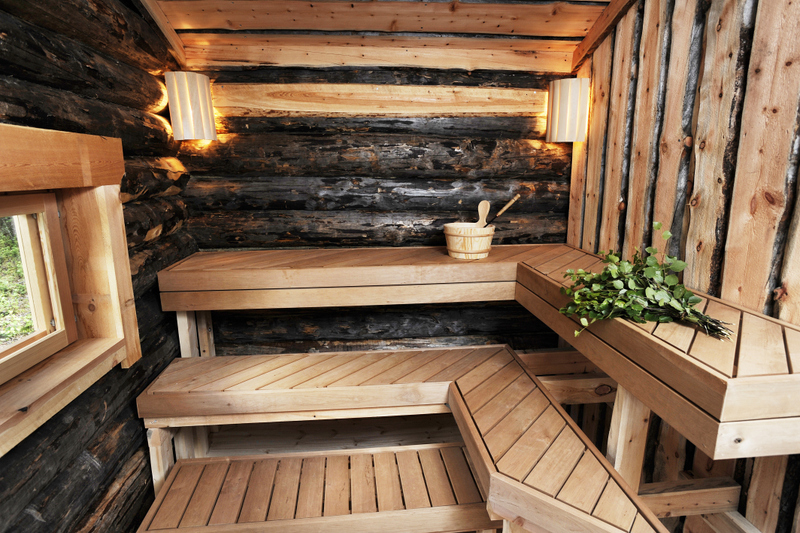Top Guidelines Of Traditional Sauna
Top Guidelines Of Traditional Sauna
Blog Article
Traditional Sauna Fundamentals Explained
Table of ContentsSome Of Traditional SaunaTraditional Sauna Fundamentals ExplainedTraditional Sauna Fundamentals ExplainedNot known Facts About Traditional Sauna
Most of the weight shed in a sauna is water loss and is re-gained upon rehydrating. Without an uncertainty sauna can be an essential component of a healthy and balanced weight loss program. To consider the differences between typical and IR saunas, I will certainly divide these into proven, theoretical, and made distinctions.Hence, the most popular factor in the saunawhich goes to the ceiling directly over the sauna heateris typically in between 185 and 190 F. Traditional Sauna. Claims that a standard sauna surpasses 200 F is simply not true and not relevant for electrical saunas marketed in the United States. The temperature for a far-infrared sauna is generally established in between 120 and 140 F; nevertheless, unlike the conventional sauna, the goal in and IR room is not to accomplish a high temperature
Since of this, the temperature level distinction is almost unnecessary, because excessive sweating leads to both sauna kinds, yet the technique of heating up the body is different. In an IR sauna the bather will certainly feel warm and will certainly sweat profusely, yet at a lot lower temperature levels. Hence, if the goal is to spend longer time periods in the sauna, the IR sauna is a good selection.

A Biased View of Traditional Sauna
When the high temperature is achieved, the elements cycle on and off to preserve the heat. Most typical sauna individuals enjoy pouring water over the rocks to create heavy steam to raise sauna moisture levels. The advantages of putting water over the rocks include: making the space much more comfy, moistening the nasal passages, and permitting the use of aromatherapy by mixing essential oils with the water.
In a far-infrared sauna, the warm front permeate the body to successfully heat the body and increase the body core temperature. To attain this increased temperature, Far-infrared emitters produce infrared energy which is close to the very same wavelength as that which the body normally emitsoften referred to as the "Vital Array" of 7 to 14 microns), so the energy is well gotten by the body.
When the power enters the body, it creates the body temperature to boost and ultimately causes perspiration. In an infrared sauna it is essential for the emitters/heaters to stay on practically regularly. Considering that there is no mass of rocks to retain heat, the sauna will certainly cool if the emitters shut off.
As mentioned over, the sauna bather in an infrared room intends to place himself in front of running emitters to get maximum advantage from the warmth. The home heating time for both spaces can be extremely different, relying on just how the spaces are made use of. For a standard sauna, a bather should allow 30-40 minutes for the area to attain a wanted temperature and to appropriately pre-heat the rocks.
How Traditional Sauna can Save You Time, Stress, and Money.
A well constructed sauna will typically accomplish a temperature of 150-160 F in regarding 30-40 mins (Traditional Sauna). For hotter temperatures, the area might require to heat for a longer period. As soon as the room achieves set temperature, the heating unit will certainly cycle on and off, generally running about 50% of the moment. The insulated wall surfaces and the heated rocks will maintain the room hot and at stable temperature levels.
To some, 15 minutes was "thrown away" while the infrared energy heated up the timber panels instead than heating up a body, while others discover a pre-heated area to be a lot more comfortable and believe an elevated starting temperature is necessary to begin sweating. The length of suggested usage for each space is around the same (10-15 minutes per session); however, due to the reduced air temperature levels and the capability to really feel the effects of infrared click here for more heat much faster than a traditional sauna, it is not unusual for a person to spend a total of 20-30 minutes in an infrared sauna.
Traditional saunas have a tendency to be larger (thus utilize more electrical energy) than infrared saunas, although standard saunas are certainly readily available in one and 2 person sizes. For a two-person typical sauna, 5x6 or 5x7 dimension is most preferred. The leading bench can comfortably seat 2 or 3 people and is additionally enough time to relax during the sauna session.


The typical price per kWH of electrical power in the united state is roughly $0.11, so a 4.5 kW heating unit will set you back about $.50 to run for one hour, if the heating unit runs constantly for one hour. Typically a sauna heater will compete 75% of the initial hour and 50% of succeeding hours on since the elements cycle once the set temperature level is attained.
All about Traditional Sauna
A 2 individual far-infrared space is usually physically smaller than a standard sauna, frequently about 4' x 4' or smaller. The IR heating unit is generally 1.5-1.7 kW making use of a 120 volt 15 amp plug-in service. Because the room can be utilized earlier than a sauna room, we will check out this site assume the space is used you could look here for to of an hour consisting of warm up time.
Finally, there is a seldom reviewed distinction in the social experience in between the 2 spaces. While our society has actually lost some of the social advantage of the standard sauna experience, it can be very socially fulfilling. From family members time in the sauna, to heart-felt conversations with loved ones, to sauna partiesthe typical sauna experience can lead to intimate mingling.
The majority of higher end infrared areas consist of colored light treatment, noise systems and full-glass fronts.
Report this page